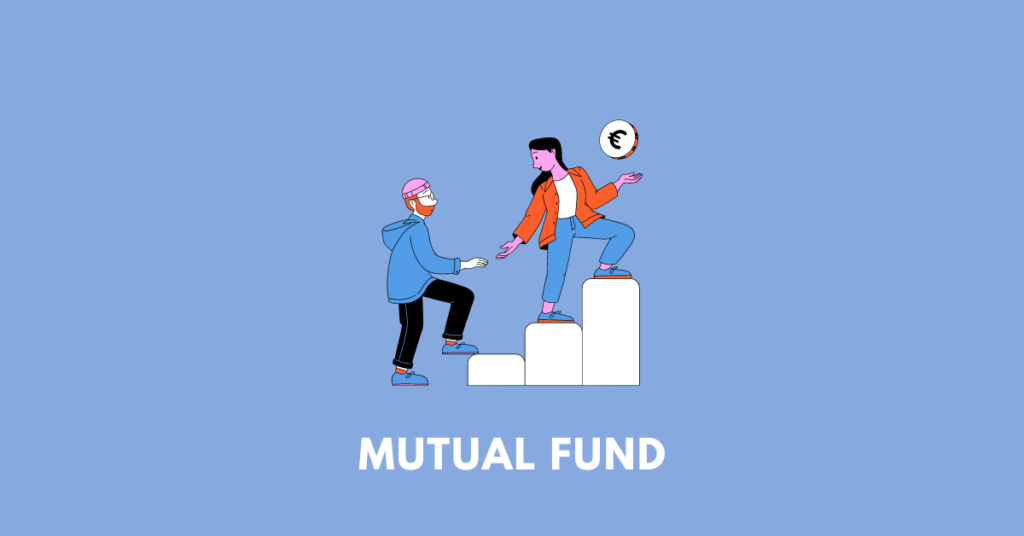
Here, you will find summaries, questions, answers, textbook solutions, pdf, extras, MCQs etc. of (Nagaland Board) NBSE Class 10 Financial Literacy Chapter 6: Mutual Fund. These solutions, however, should be only treated as references and can be modified/changed.
Summary
In this chapter, we learn about mutual funds as a popular investment vehicle for investors seeking diversification and professional management. A mutual fund is a professionally managed collective investment scheme that pools money from many investors and invests it in stocks, bonds, short-term money market instruments, and other securities. The fund manager is responsible for making investment decisions on behalf of the investors, taking the responsibility of investing in stocks and shares after due analysis and research.
Investors prefer mutual funds for various reasons, including the convenience of leaving research and analysis to the professional fund management team, and the diversification they offer by investing in a variety of shares, bonds, and other securities across different companies and sectors. This diversification helps reduce the overall risk of the portfolio.
A New Fund Offer (NFO) is the launch of a new mutual fund scheme, inviting investors to put their money into the scheme by subscribing to its units. Before investing in a mutual fund, it is important for investors to read the Offer Document (OD) as it contains all the material information required to make an informed decision, including risk factors, dividend policy, investment objectives, expenses, fund manager’s experience, and historical performance of other schemes by the fund.
The process of investing in an NFO involves filling out an application form, reading the Offer Document or Key Information Memorandum (KIM), and submitting a cheque or demand draft. The application is then forwarded to the Register and Transfer Agent (RTA), who captures the information, sends the cheque to the bank, and creates units for the investor.
Investors have certain rights and obligations. They are mutual, beneficial, and proportional owners of the scheme’s assets, and the investments are held by the trust in a fiduciary capacity. They have the right to receive dividends within 30 days of declaration and to obtain relevant information from the trustees. They can also inspect documents, receive audited annual reports, wind up a scheme, be informed about changes in the fundamental attributes of a scheme, and approach the investor relations officer for grievance redressal. In case an investor does not get an appropriate solution, they can approach the investor grievance cell of SEBI.
Textual questions and answers
Choose the correct answer (MCQs)
1. A mutual fund is a professionally managed type of ______.
Answer: A. Collective investment scheme
2. A ________ takes the responsibility of investing in stocks and shares after due analysis and research.
Answer: C. Mutual Fund
3. ________ is like an invitation to the investors to put their money into the mutual fund scheme by subscribing to its units.
Answer: C. NFO
4. In case the investor does not get appropriate solution, he can approach the investor grievance cell of ________.
Answer: C. SEBI
5. The Offer Document contains all the material information that the investor would require to make an informed decision such as ________.
Answer: C. Both (a) & (b)
Fill in the blanks (Can be used as MCQs in exams)
1. Mutual funds have a ________ who invests the money on behalf of the investors.
Answer: Fund manager
2. The ________ contains all the material information that the investor would require to make an informed decision.
Answer: Offer Document
3. ______ have a right to be informed about changes in the ________ attributes of a scheme.
Answer: Investors, fundamental
4. Investors can approach the investor relations officer for ________.
Answer: Grievance redressal
5. Investors are mutual, beneficial, and proportional owners of the scheme’s ________.
Answer: Assets
Extra/additional questions and answers (MCQs)
Q1. A mutual fund is a type of ________ investment scheme.
A. Individual B. Collective C. Personal D. Exclusive
Answer: B. Collective
Q2. In a mutual fund, money is pooled from many investors and invested in stocks, bonds, and ________.
A. Real estate B. Artwork C. Short-term money market instruments D. Cryptocurrency
Answer: C. Short-term money market instruments
Q3. The professional who invests the money on behalf of the investors in a mutual fund is called a ________.
A. Stockbroker B. Financial planner C. Fund manager D. Investment banker
Answer: C. Fund manager
Q29. The ________ is a legal relationship of confidence or trust between two or more parties.
A. Fiduciary duty B. Power of attorney C. Investment management agreement D. Agency relationship
Answer: A. Fiduciary duty
Q30. The investor can also sue the ________ in case their grievance is not resolved.
A. AMC B. Fund manager C. Distributor D. Trustees
Answer: D. Trustees
Get notes of other boards, classes, and subjects